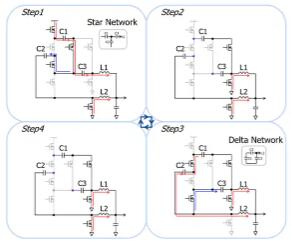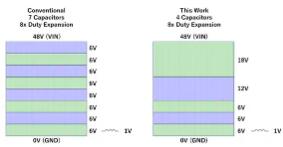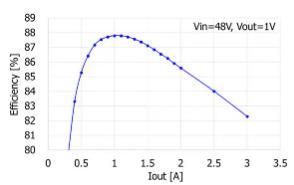Manufacturers
- Abracon
- Adam Tech
- Aerospace, Defense & Marine
- Agastat
- AIC
- AKM Semiconductor
- Alcoswitch
- Allegro
- Alps Electric
- Altera
- AMI Semiconductor
- AMP
- ams
- Analog Devices (ADI)
- Aptina Imaging
- Atmel
- Avago / Broadcom
- AVX
- Axicom
- Bccomponents
- Beyschlag
- BI Technologies
- Bourns Inc.
- Bowei Integrated Circuits
- Bridgelux
- Buchanan
- California Micro Devices
- Catalyst Semiconductor
- CGS
- Cirrus Logic
- Citizen Electronics
- CML Microcircuits
- Coiltronics
- Cooper Bussmann
- Corcom
- Core Logic
- Cree
- CSR PLC
- CTS
- Cypress Semiconductor
- Dale
- Data Image
- Deutsch
- Diodes Incorporated
- DOMINANT Opto Technologies
- E-T-A
- Eaton
- ECS
- Edison Opto
- Elcon
- EPCOS
- Epistar
- Epson
- Everlight Electronics
- Exar
- Fairchild Semiconductor
- FCI
- Freescale Semiconductor
- Fremont Micro Devices (FMD)
- Fujitsu Semiconductor
- Fulltech Electric
- General Semiconductor
- Harvatek
- Holsworthy
- Hsuan Mao Technology
- IDT
- Infineon Technologies
- Innolux
- International Rectifier (IR)
- Intersil
- IRC
- ISSI
- IXYS-IC
- Jing Cheng Electronical
- JL World
- Johanson Dielectrics
- Johanson Technology
- JRC / NJR
- JST
- KEC
- Kilovac
- Kingbright
- Kyocera Industrial Ceramics
- LEDiL
- Linear Technology / ADI
- Lite-On Technology
- Littelfuse
- Lumex
- Lumileds
- Luminary Micro
- Luminus Devices
- Macronix
- Maojwei / ZJPT
- Maxim Integrated
- MCC
- Mean Well Enterprises
- Microchip Technology
- Micron
- Microsemi
- Mini-Circuits
- Molex
- Murata Manufacturing
- Murata Power Solutions
- MWT
- National Semiconductor
- Nichicon
- Nippon Chemi-Con
- NJR / JRC
- NVE
- NXP Semiconductors
- OEG
- Omnivision
- ON Semiconductor
- Optek Technology
- Optrex
- OSRAM Opto Semiconductors
- OTAX
- Panasonic
- Peregrine(pSemi)
- Potter & Brumfield
- Power Integrations
- PowerStor
- Preci-Dip
- Prewell
- Products Unlimited
- Pulse Electronics
- PulseCore Semiconductor
- Qorvo
- Raychem
- Renesas Electronics
- RFMD
- Richtek Technology
- ROHM Semiconductor
- Rubycon
- Samsung Electro-Mechanics
- Samsung Semiconductor
- Schaffner
- Schrack
- Seiko Instruments, Inc. (SII)
- Semtech
- Sensata
- Seoul Semiconductor
- Sfernice
- Sharp Display
- Sharp Microelectronics
- Silicon Labs
- Siliconix
- Skyworks Solutions
- SoniCrest / JL World
- Spansion
- Sprague
- Stanley Electric
- STMicroelectronics
- Sunny Electronics
- Susumu (SSM)
- Taimag
- Taiyo Yuden
- TDK
- TDK-Lambda
- TE Connectivity
- Teccor
- Texas Instruments (TI)
- Thin Film
- Tianma Micro-electronics
- TOCOS
- TOKO
- Toshiba Electronic Components
- TT Electronics
- Tusonix
- TXC
- Tyntek
- Vishay
- Vishay Precision Group
- Vitramon
- Walsin Technology
- Weidmuller
- Welwyn
- Wickmann
- Winbond
- Xilinx
- Yageo
- Zetex Semiconductors
- ZJPT / Maojwei
News
Toshiba Develops 48V-to-1V Non-Isolated DC-DC Converter IC
2024-06-28 | ReturnKawasaki, Japan ― Toshiba Electronic Devices & Storage Corporation (Toshiba) has developed an innovative star-delta switching topology that eliminates the need for a transformer for DC-DC converter ICs with 48V input and 1V output, and that achieves the industry’s highest current densities[1] of up to 790 mA/mm², plus a high power conversion efficiency of up to 88%. The topology contributes to smaller, more efficient high-voltage DC-DC power supplies for high current applications.
Incremental rises in load currents in the DC-DC converters of server and data centers are increasing conduction losses[2] of interconnects. Standardization to reduce the losses centers on raising the input voltage from 12V to 48V. However, for the current Buck topology, this requires the width of the pulses that drive the power switch to be four times shorter, and that increases switching losses that degrade power conversion efficiency. The mainstream solution is to use transformers in the isolated topologies to expand the driving pulse width, but they require a lot of space. Non-isolated hybrid topologies[3] that use both inductors and capacitors able to reduce the volume by 10 to 100 times have emerged as an alternative, but one that requires the addition of 0.8 to 1.0 capacitors per pulse-width expansion ratio[4]. This increases external components and congestion in external pin wiring, resulting in excessive mounting costs.
Toshiba has developed an innovative star-delta switching topology that merges the switching layers[5] on the input side where the current is comparably small, and has reduced the capacitor count per pulse-width expansion ratio to 0.5 to 0.6 (Figure 1). When power is turned on, Steps 1 to 4 are repeated, with capacitors configured in a star network[6] in Step 1 and in a delta network[7] in Step 3. Each switching layer requires at least one capacitor, and optimizing the number of switching layers reduces the total number of capacitors (Figure 2). While the conventional method generates multiple equally-divided switching layers from the 48V input voltage, the new method merges the switching layers of low current, reducing the total number of capacitors. Toshiba has confirmed that although this merging requires the use of high-voltage switches, there is no obvious area expansion compared to multiple low-voltage switches in the conventional non-isolated hybrid topology, since the size of the switches can be minimized as the current is minimal.
Toshiba’s analysis of test chips with the topology confirmed the industry’s highest current densities[1] of 730 to 790 mA/mm². This was achieved with the development of a bootstrap circuit with reduced capacitance, which reduced the layout area by up to 61% (Toshiba measurement). To further improve the conversion efficiency, Toshiba developed a level shifter circuit[8] that can support an active bias current scheme, which reduces bias current by up to 92%, and confirmed power conversion efficiency of up to 88% (Figure 3) (Toshiba measurement). Toshiba will further refine the topology toward early product launch.
Toshiba presented the details of the technology at the 2024 IEEE Symposium on VLSI Technology & Circuits, an international semiconductor conference held in Hawaii, USA, from June 16 to 20.
[1]: Investigated by Toshiba in June 2024, for 48V-to-1V DC-DC converter IC with fully integrated power switches and larger than 80% conversion efficiency, and larger than 2.5 MHz switching frequency.
[2]: Conduction loss: Power loss that occurs when current flows through an electrical component and its wiring. Power consumed during this process is released as heat.
[3]: Non-isolated hybrid topologies: Circuit topologies that achieve pulse-width expansion by using a combination of inductors and capacitors instead of transformers.
[4]: Capacitor count per pulse-width expansion ratio: The value is obtained by dividing the required number of capacitors by the pulse width expansion ratio, which is a measure of the redundancy of capacitors.
[5]: Switching layers: The switching divisions formed by the switching of the intermediate nodes in the non-isolated hybrid topology. In the Buck topology, there is only one switching layer with the switching amplitude of the input voltage.
[6]: Star network: A configuration where the wiring is arranged in the shape of a star.
[7]: Delta network: A configuration where the wiring is arranged in the shape of a delta.
[8]: Level-shifter circuit: A circuit that shifts the voltage level of input signal with the same waveform to a different voltage level. Normally a DC-DC converter requires a level-shifter circuit for each of its power switches, since they are configured in a stack connection and the reference voltage value of each switch is different.

Figure 1. The proposed star-delta switching network.

Figure 2. Comparison of switching layers between the current non-isolated hybrid topology and the proposed star-delta switching topology.

Figure 3. Conversion efficiency of the star-delta switching topology (Toshiba measurement).
* Company names, product names, and service names may be trademarks of their respective companies.
* Information in this document, including product prices and specifications, content of services and contact information, is current on the date of the announcement but is subject to change without prior notice.
Source: https://www.global.toshiba





